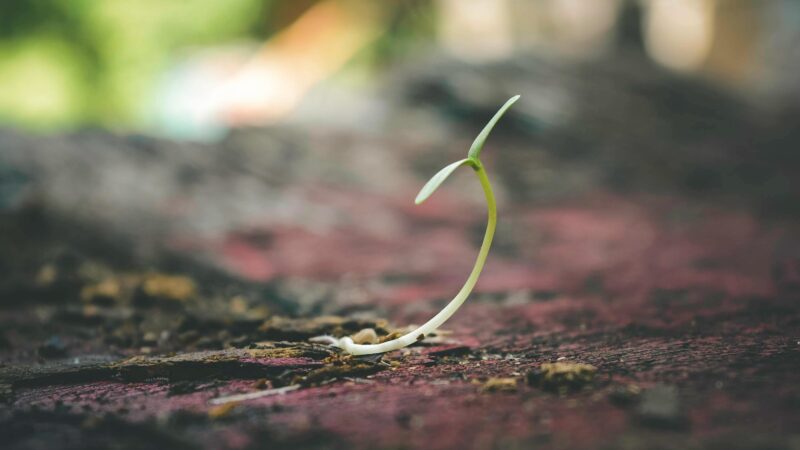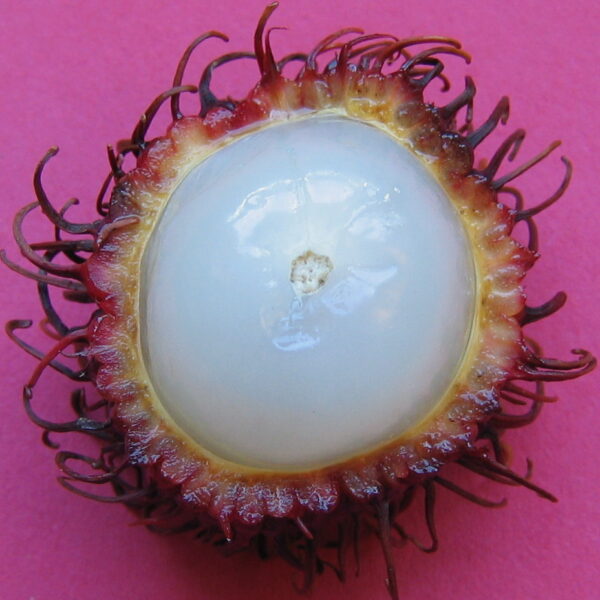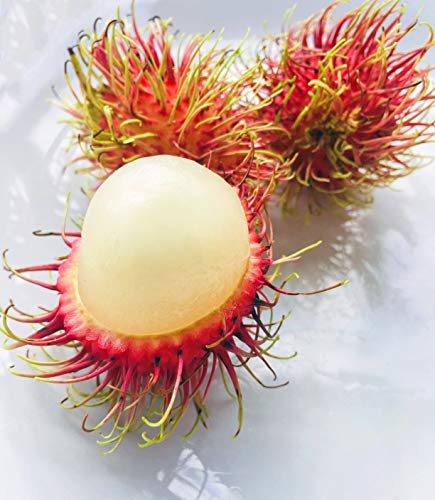
If you've ever tasted a juicy rambutan and dreamed of growing your own, you're in for an adventure! Rambutan trees are stunning tropical plants, and while cultivating one from seed requires patience, the reward is well worth it. Here's everything you need to know to start your rambutan journey.
Native to Southeast Asia, the rambutan tree (Nephelium lappaceum) produces fruit that looks like a hairy lychee and grows in warm, humid climates. The tree thrives in U.S. hardiness zones 10-13 and requires consistent temperatures between 71°F and 86°F (21°C-30°C).

Rambutans prefer acidic, well-draining soil and are shallow-rooted, requiring regular moisture. However, they don't tolerate cold; even brief exposure to temperatures below 50°F (10°C) can be harmful.
The key to successful rambutan cultivation is starting with a fresh seed. Rambutan seeds lose viability quickly, so use them soon after harvest.
Once your seedling emerges, care is essential to ensure strong growth. Maintain high humidity (around 75-80%) and temperatures around 80°F (26°C). For optimal results, transplant the seedling into a larger pot once it grows to about 1 foot (31 cm) tall, which can take up to two years. Use a ceramic pot with a soil mix of equal parts sand, vermiculite, and peat to promote drainage.
Rambutan trees are heavy feeders and require a structured fertilization routine as they grow. Here's an easy guide to follow:
| Tree Age | Fertilizer Components | Frequency |
|---|---|---|
| 6 months - 1 year | 55g potash, 115g phosphate, 60g urea | Twice a year |
| 2 years | 165g potash, 345g phosphate, 180g urea | Every six months |
| 3 years | 275g potash, 575g phosphate, 300g urea | Every six months |
Stick to this schedule, and your rambutan tree will thank you with lush growth and eventually, fruit.
Growing rambutan from seed is a long-term commitment. It typically takes four to five years for a seed-grown tree to start bearing fruit. Meanwhile, grafted trees may fruit in as little as two years. Keep your rambutan well-watered but never waterlogged, and prune it as needed to maintain health and shape.
While rambutans aren't highly susceptible to diseases, you may encounter pests such as fruit flies, moths, or birds. Fungal diseases like powdery mildew can also appear, but regular maintenance, neem oil, and fungicides can help.
Have you ever grown a rambutan tree or thought about starting one? Share your experiences and tips in the comments! We'd love to hear your tropical gardening stories.

Experience the exotic taste of Fresh Tropical Rambutan Fruit. With its vibrant, hairy shell revealing a sweet, juicy flesh, this delightful fruit is a true tropical indulgence. Perfect for snacking or adding a unique twist to your fruit salads and desserts, rambutans are rich in vitamins and antioxidants. Enjoy the luscious, grape-like texture and refreshing sweetness that makes rambutan a beloved delicacy in Southeast Asia and beyond.
A rambutan tree grown from seed typically takes five to six years to bear fruit. In contrast, trees propagated by budding or grafting take only two to three years to fruit.
Yes, you can grow rambutan from seed indoors. Ensure you plant the seed in well-draining soil and maintain a warm, humid environment with plenty of natural light or use grow lights. Be sure to water regularly without overwatering.
Rambutan thrives in rich, sandy loam soil with good drainage. The soil should be slightly acidic to neutral, with a pH level between 5.5 and 6.5. Adding organic matter like compost can improve soil fertility and structure.
To care for a rambutan seedling, keep it in a location with plenty of sunlight and ensure the soil remains moist but not waterlogged. Fertilize every couple of months with a balanced fertilizer, and protect it from strong winds and cold temperatures.
Common problems when growing rambutan include pests like aphids and mites, diseases such as root rot due to overwatering, and poor fruiting from inadequate nutrients or pollination. Regularly monitor and address these issues for healthy growth.
As you embark on this exciting journey to grow your own rambutan tree, remember that we're right here with you, ready to share more gardening tips and tricks. If you enjoyed this post, why not stay connected and explore more with us? Our Pinterest boards are brimming with visual inspiration and garden designs that might spark your next project. For a sneak peek behind the scenes and daily updates, come say hello on Instagram—we love sharing plant progress and green ideas with our community. And if you're all about quick tips and lively discussions, join us on X (formerly Twitter). Of course, we’d be thrilled to keep the conversation going on Facebook, where we can share stories, triumphs, and maybe even a few gardening mishaps together. Thanks for joining us on this leafy adventure—we can't wait to see how your rambutan journey unfolds!

Immerse yourself in architecture’s most boundary-pushing ideas—where innovative home improvements meet visionary urban developments. Discover new building techniques, materials, and creative concepts that are redefining how we shape our spaces on a global scale.